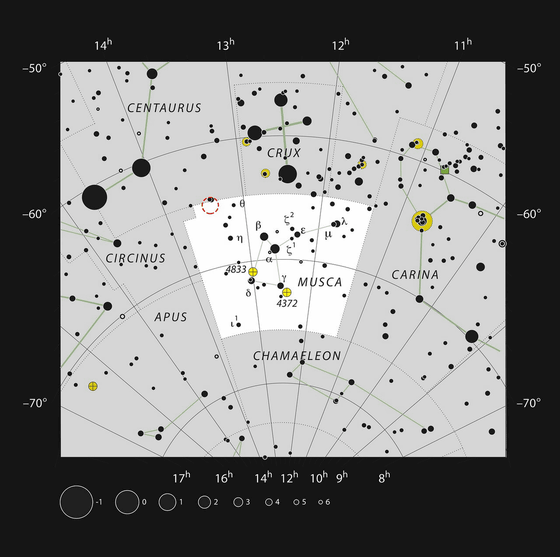Succeeded in shooting for the first time a planet that orbits a sun-like star more than 300 light years away from the earth

'
Two directly-imaged, wide-orbit giant planets around the young, solar analogue TYC 8998-760-1
(PDF file) https://www.eso.org/public/archives/releases/sciencepapers/eso2011/eso2011a.pdf
First Ever Image of a Multi-Planet System around a Sun-like Star Captured by ESO Telescope | ESO
https://www.eso.org/public/news/eso2011/
TYC 8998-760-1, which is about 310 light-years away from Earth, is a star with a mass of 1.00±0.02 times that of the Sun, and is known to have the same spectral classification as the Sun. It is being done.

ESO's research team is using ESO's
The following pictures were taken in real life, and the arrows show TYC 8998-760-1 b and TYC 8998-760-1 c. Further observations revealed that the distance from TYC 8998-760-1 was about 160 AU for TYC 8998-760-1 b and about 320 AU for TYC 8998-760-1 c. One astronomical unit is the average distance from the earth to the sun, which is about 149.6 million km.

Regarding the mass of each planet, TYC 8998-760-1 b was found to be about 14 times that of Jupiter, and TYC 8998-760-1 c was found to be about 6 times that of Jupiter. The mass of Jupiter is 1.8986×10 27 kg, which is about 318 times that of Earth.
Unlike a star that emits light by itself, a planet can be seen only in the form of reflection of the light of the star and the shadow reflected on the star, so it is said that it is extremely difficult to directly shoot an exoplanet. Although there have been cases where exoplanets have been photographed so far, this is the first time that a planet revolving around a star similar to the sun has been photographed.
Associate Professor Matthew Kenworthy, an astronomer at Leiden University, said, 'Only a few exoplanets are directly imaged. Direct observation of exoplanets can help us find a viable environment. It is important.'
``This discovery is very similar to the solar system, but a snapshot of the environment much earlier in the evolution of the solar system,'' said Alexander Bourne, a member of the research team and a PhD student at Leiden University. 'The study of the TYC 8998-760-1 system could be an important milestone in understanding a stellar system with multiple planets and could affect the history of our own solar system. There is.”
Related Posts:
in Science, Posted by log1i_yk







